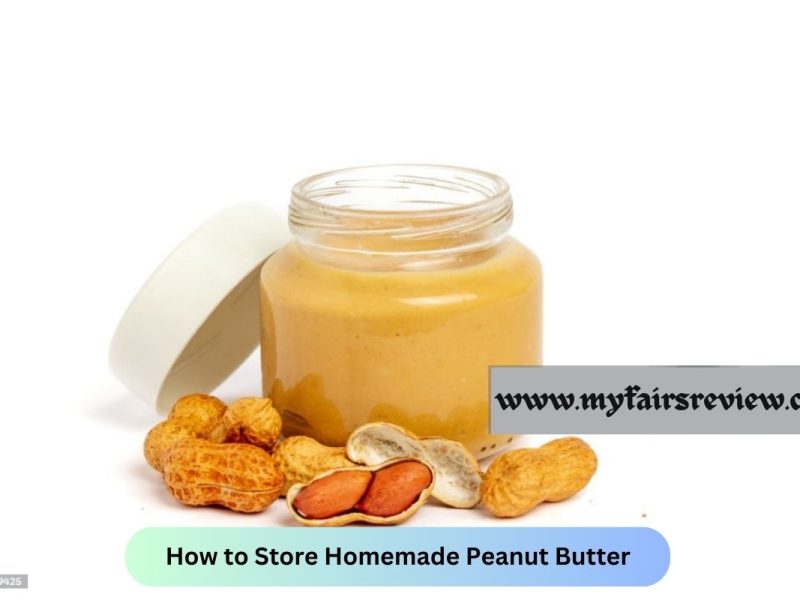To measure peanut butter accurately, use a kitchen scale for precise measurement. Peanut butter is a popular and versatile food that can be used in sandwiches, desserts, and various dishes.
Whether you are following a recipe or watching your portion size, it is important to measure peanut butter accurately. By using a kitchen scale, you can achieve precise measurements, ensuring consistency in your cooking and baking. This method allows you to measure the exact amount needed, avoiding any guesswork or estimation.
We will explore the best way to measure peanut butter using a kitchen scale, providing you with the knowledge and confidence to incorporate this delicious spread into your culinary creations with ease.
Why Precise Measurements Matter
Accurate measurements are crucial when measuring peanut butter in cooking. Ensuring precise measurements is important because it impacts the flavor and consistency of the final dish. Challenges often arise when measuring peanut butter due to its sticky nature. Its thick consistency can make it difficult to measure exactly, resulting in inaccurate amounts being added to recipes.
This can affect the overall taste and texture of the dish. To overcome this challenge, it is advisable to use measuring tools specifically designed for sticky substances like peanut butter. These tools help to scoop out the desired quantity without any wastage or mess.
By measuring peanut butter accurately, you can achieve the perfect balance and enhance the flavor in your cooking.
Essential Tools For Precise Peanut Butter Measurement
When measuring peanut butter accurately, essential tools like measuring cups and spoons come in handy. These allow you to portion out the desired amount of peanut butter without any guesswork. Additionally, a digital kitchen scale provides precise measurements, which is especially helpful when following a recipe.
By using a scale, you can ensure that your peanut butter measurements are consistent every time. Another tool that can assist you in measuring peanut butter is a peanut butter stirrer. This utensil helps to mix the oil and solids in the jar, resulting in a consistent texture throughout.
Overall, investing in these essential tools will make measuring peanut butter a simple and precise task. So, next time you’re whipping up a peanut butter-based recipe, don’t forget to use these handy instruments to guarantee accurate measurements for delicious results.
Tips For Achieving Precise Peanut Butter Measurements
Achieving precise measurements of peanut butter is essential for accurate recipes. To start, use a leveled container to ensure consistency. The spoon-and-scrape method is a foolproof way to get the right amount. Place the spoon in the jar, scoop out the desired quantity, and then scrape off the excess.
This technique ensures you don’t end up with too little or too much peanut butter. Avoid packing it tightly, as this can lead to inaccurate measurements. Instead, gently fill the measuring spoon or cup without compressing the peanut butter. By following these tips, you’ll be able to measure peanut butter accurately and create delicious recipes every time.
Mastering Different Measurement Units
Peanut butter can be measured in multiple ways, with volume and weight being the primary units. Understanding the conversion between volume and weight is essential in mastering different measurement units. Converting volume to weight ensures accurate calculations, especially when it comes to specific recipes.
When measuring peanut butter, it is often more reliable to use weight rather than volume due to its thick consistency. By using a kitchen scale, you can easily measure peanut butter by weight, providing precise results for your baking or cooking needs.
So, next time you are in the kitchen, consider measuring peanut butter by weight to achieve the best results in your culinary creations.
Overcoming Common Peanut Butter Measurement Mistakes
Are you tired of making mistakes when measuring peanut butter? Let’s tackle one common debate: spoonful vs. leveled spoon. When it comes to measuring peanut butter, using a spoonful can lead to inconsistent results. Instead, opt for a leveled spoon to ensure accurate measurements.
Another factor to consider is the container. Plastic containers may distort the measurements due to their flexibility, while glass containers provide more stability. Moreover, dealing with sticky peanut butter residue can be challenging. To overcome this, try spraying the measuring spoon or cup with cooking spray before scooping the peanut butter to prevent sticking.
By following these tips, you can measure peanut butter more accurately and avoid any measurement mishaps.
Quick And Easy Recipes Requiring Precise Peanut Butter Measurements
Peanut butter measurements are crucial for accurately following recipes like peanut butter cookies, smoothies, and fudge. Achieving the right consistency and flavor depends on precise measurements. Whether it’s a cup, tablespoon, or teaspoon, knowing the best way to measure peanut butter ensures successful results.
For cookies, using a measuring cup or spoon eliminates guesswork and guarantees consistent cookie dough. In smoothies, measuring peanut butter prevents overpowering flavors and ensures a balanced taste. When making fudge, precision is key to maintain the perfect texture and sweetness.
Whether you scoop, scrape, or level, measuring peanut butter accurately is essential. So, grab your favorite recipes, precise measurements tools, and indulge in the delicious world of peanut butter creations. Happy baking and blending!
Expert Tips For Precision In Peanut Butter Recipes
Peanut butter plays a crucial role in various recipes, and measuring it accurately is essential for consistent results. Precise measurements ensure the desired consistency in peanut butter recipes. To achieve this, expert tips recommend adjusting measurements based on the desired consistency.
For those seeking a lower fat content or a thicker peanut butter, incorporating powdered peanut butter can be a helpful option. This allows you to reduce the amount of regular peanut butter while still maintaining the desired taste and texture.
Another aspect to consider is measuring peanut butter in baking. Recipes often call for specific amounts, and accurately measuring peanut butter ensures the right balance of flavors. Whether you’re making cookies, cakes, or other peanut butter-based treats, precise measurements guarantee the perfect outcome.
So, embrace these expert tips to measure peanut butter, and elevate the taste of your recipes to new heights.
Frequently Asked Questions For Best Way To Measure Peanut Butter
What Is The Best Tool To Measure Peanut Butter?
The best tool to measure peanut butter is a kitchen scale.
Do You Measure Peanut Butter Wet Or Dry?
You measure peanut butter in its wet state.
How Is Peanut Butter Measured?
Peanut butter is typically measured using measuring cups or spoons to get accurate quantities.
How Do You Properly Measure Peanut Butter Or Fats?
To measure peanut butter or fats properly: Use a measuring spoon or cup to scoop and level the desired amount. Avoid overflowing or compacting the peanut butter.
Conclusion
Measuring peanut butter accurately is essential for ensuring accurate recipes and portion control. Whether you choose to use measuring cups, spoons, or a kitchen scale, the key is consistency. The method you select should align with the recipe’s measurements, allowing you to achieve the desired taste and texture in your dishes.
Remember to level off the peanut butter when using measuring cups and spoons to ensure accuracy, and consider using weight measurements for a more precise result. Taking the time to measure peanut butter correctly will not only result in a better culinary experience but also help you manage your intake and maintain a healthy diet.
So the next time you reach for the peanut butter jar, keep these measurement techniques in mind, and enjoy the delicious possibilities it brings to your kitchen.


